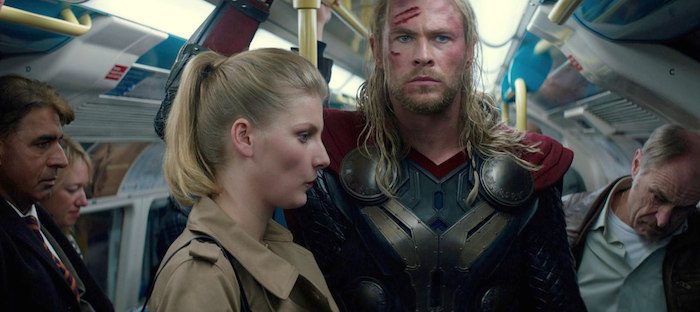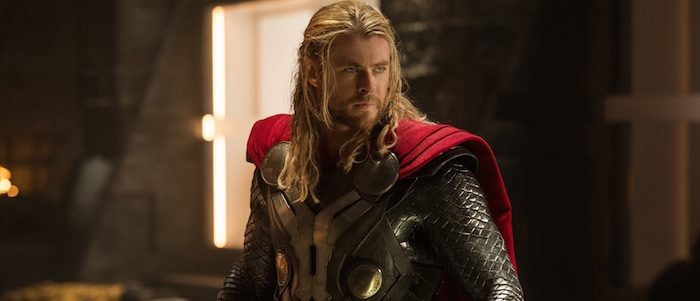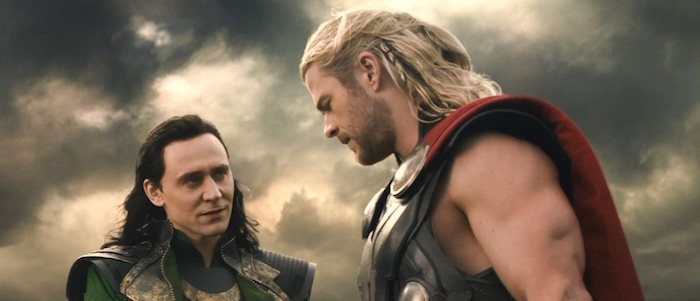
(Welcome to Road to Endgame, where we revisit all 22 movies of the Marvel Cinematic Universe and ask, “How did we get here?” In this edition: Thor: The Dark World defines Marvel’s “villain problem” but doesn’t do much else.)
Thor: The Dark World plays like Marvel’s first truly troubled production. The rush to get the ball rolling saw the exit of Thor director Kenneth Branagh, after which Patty Jenkins was hired but departed soon after, citing creative differences. It was for the best, as Jenkins would go on to direct Wonder Woman for DC; arguably The Dark World’s only lasting impact.
It’s a messy film sprinkled with brief moments of fun, aiming to take Thor on a universe-spanning adventure on a larger scale than before, but it sacrifices anything resembling ethos in the process. The film replaces character beats with overwrought plotting and exposition, and while it still delivers a romp of a final act, it commits a shared-universe cardinal sin: its protagonist ends up right where he began, and goes nowhere in between.

A Misaligned Tale of Convergence
Thor: The Dark World has too much going on, and yet, too little by way of connective tissue. The film depends too greatly on the coming together of disparate threads, most often by happenstance. Its various subplots are connected not by theme or by character, but by coincidence. It has the appearance of well-structured drama, but it leaves too many elements hanging in mid-air to form a coherent whole.
It’s also an unfortunate meta-text about its own narrative failings.
The film opens millions of years in the past, as Odin’s father Bor — appropriately pronounced “bore”— battles The Dark Elves during something known as “The Alignment.” The Elves are vanquished amidst Odin’s voiceover exposition, one that finds itself repeated not 45 minutes later. The Elves’ weapon, The Aether, is buried “where no one can find it” (i.e. it’s left in a cave) and everything is just hunky dory until present day. Now, The Alignment is about to occur once more, an event during which the Nine Realms of the Cosmos (Earth, Asgard, and the seven that don’t matter) come into contact, and the laws of physics go slightly wonky.
The problem is, nothing really happens or can happen until The Alignment takes place. Earth is the event’s epicenter, and if the Aether is deployed at just the right moment, it could… make the universe dark again? The stakes are never made clear. Dark Elf leader Malekith (Christopher Eccleston) must be present for there to be a threat, though he has nothing of note to do until the worlds align. All Thor and his friends can do is waste time wheel-spinning until Malekith decides to act. Every character in the film is simply waiting for other story pieces to fall into place, and outside of Thor breaking Loki out of prison an hour in, no one seems to have a shred of narrative agency.
Jane Foster (a returning and underutilized Natalie Portman) investigates the effects of the Alignment on Earth. By coincidence, she gets temporarily sucked into Svartalfheim, the prologue-planet made of dust and greenscreen. She stumbles upon the barely-hidden Aether — later revealed to be an Infinity Stone — after which its gooey red liquid takes residence in her bloodstream.
By coincidence, Thor happens to be talking to universe-observer Heimdall (Idris Elba) at this exact moment. Heimdall’s gaze fails to catch Jane during the brief time she’s away, though she gets herself out of the dust realm with ease, so Thor’s arrival is for naught. Also by coincidence, Malekith awakes from his millennia-long slumber. There’s little causality between events in the film, despite its own dialogue hinting at more interesting alternatives; Malekith mentions being awakened by the Aether and the Alignment, though what connection he has to either them, or what connection they have to each other, is unclear
Malekith seeks to invade Asgard. His only dramatized motivation is their ancient blood-feud, and by sheer coincidence once more, he stumbles upon Jane and the Aether during his siege. His plan here appears to be the very literal destruction of Asgard’s throne; he tosses as grenade at it (an action without consequence; it’s easily repaired) and the whole sequence plays like a spiteful prank. In failing to flesh out even Malekith’s basic motivations, his scenes have no bearing on the story. Things could have progressed exactly as they did if Jane hadn’t been present on Asgard.
Coincidence driving setup isn’t inherently a problem, but the threads in Thor: The Dark World are only connected by chance, and they often have no payoff. As Malekith’s henchman destroys Asgard’s prison, a jailed post-Avengers Loki (Tom Hiddleston) points him in the right direction out of spite for his brother. This henchman goes on to kill Loki’s mother Frigga, a dramatic irony that is neither used to build on Loki’s story, nor even remarked upon. Few decisions in the film come from genuine motivation, and even fewer result in genuine drama.

Svartalfheim, Oh Svartalfheim
Nobody cares about the empty, lifeless planet Svartalfheim. Not the audience, and not even the characters, despite it being the setting of some of the most important scenes.
The film opens on Svartalfheim, the site of Asgard’s culling of the Dark Elves; the planet’s ruins are where the Aether is hidden, and where Jane Foster ends up when she discovers The Alignment. Jane, an astrophysicist who studies wormholes and related phenomena, is magically transported to the other end of the universe, yet this experience has no bearing on her as a character.
Svartalfheim is the only backdrop in Thor: The Dark World that looks particularly ugly. The rest of the film is admittedly remarkable in this regard, bridging the worlds of fantasy & sci-fi by contrasting metallic tech with vividly coloured regality. Svartalfheim is also where the film’s emotional climax occurs, for multiple characters. Yet Malekith returning to the spot where his people were massacred adds little to the drama, nor does the fact that he’s facing the grandchildren of the man responsible. The scene would have played out exactly as-is if it were set in giant ball-pit.
The film attempts (and fails) to build to an emotional crescendo here. Loki seemingly martyrs himself, though this is revealed to be a ruse, and his arc is undone thanks to the film’s sequel-itis. The plot then tacks on an entire fourth act so the film can finally have some fun. Despite the haphazard setup though, this second climax is one place Thor: The Dark World actually succeeds (Thor and Malekith playing inter-dimensional Portal is a blast to watch).
Svartalfheim is, quite literally, a dark world. It’s too muddy to get a good look at, and the action taking place on it is consistently obscured. More importantly, its scenes feel divorced from any weight or meaning, despite its deep connection to the characters.
Of course, that might have a little something to do with Malekith himself…
Continue Reading Road to Endgame >>
The post Road to Endgame: ‘Thor: The Dark World’ is a Metaphor for Its Own Massive Problems appeared first on /Film.
from /Film https://ift.tt/2CSCn6S
